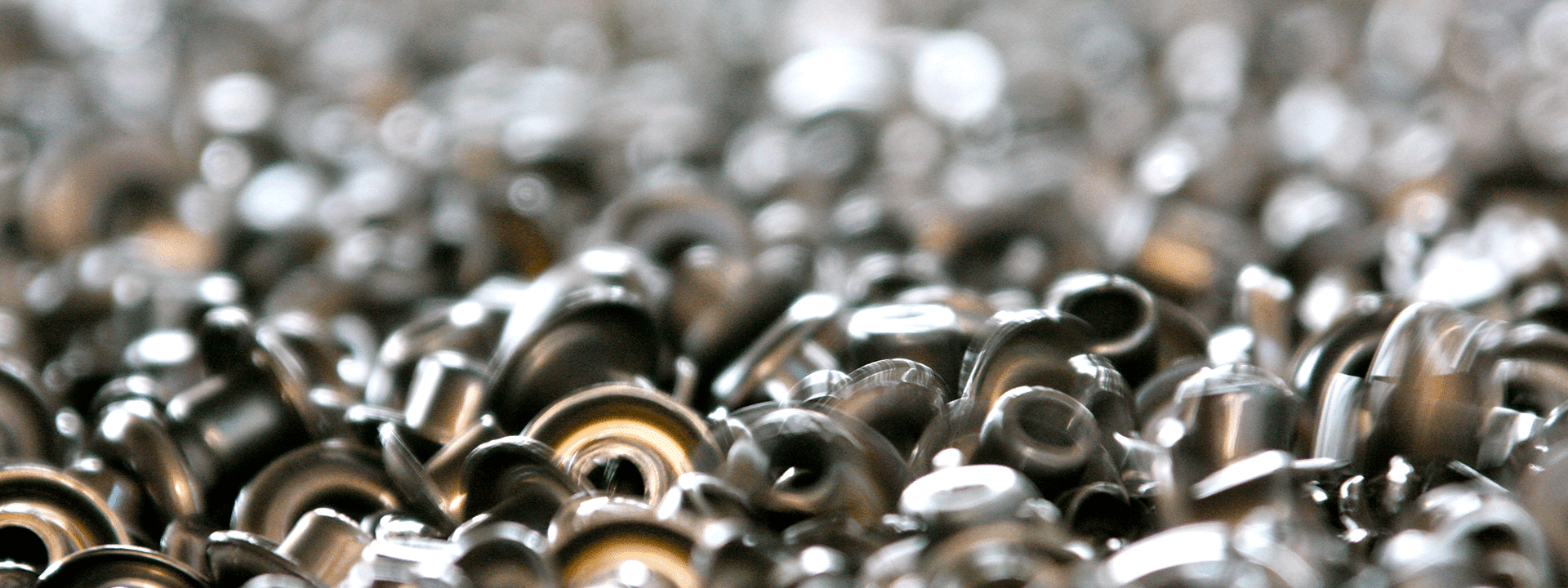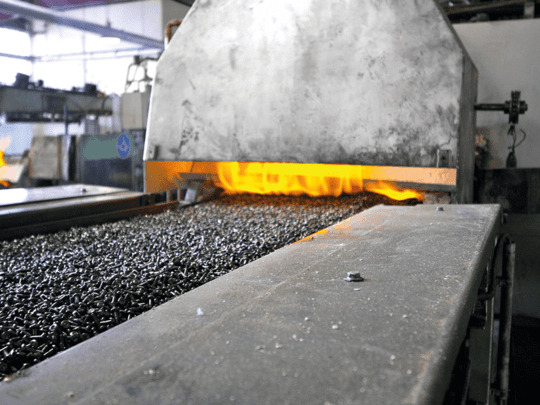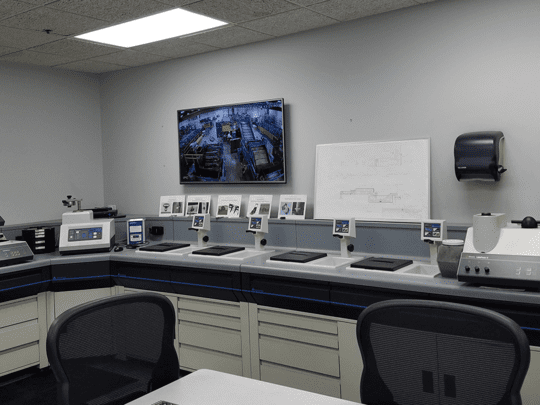
In a conventional quench and temper heat treat process the part is heated to a temperature high enough to produce a fully austenitic structure; (1450°F to 1750°F depending on the material and part). The part is then quenched rapidly down to a temperature near room temperature; (80°F to 250°F). The part immediately transforms to martensite resulting in a volumetric expansion. In areas of the part with varying cooling rates this transformation expansion occurs at different times resulting in non-uniform stress concentrations and ultimately distortion. The part, as quenched, is hard and brittle and must be tempered back to the desired hardness.

In the austempering process the austentizing cycle is the same as that of quench and tempering but the quenching technique is vastly different. The part is quenched from the austentizing temperature directly into a hot, austempering medium, (usually molten nitrate/nitrate salt), and held for a time sufficient to produce the bainitic structure. Bainite is a structure of acicular ferrite and carbide. Unlike the martensitic reaction, this occurs over minutes or hours and the transformation takes place uniformly over the entire part regardless of section or configuration. Because of this slowed down transformation and the fact that the transformation expansion from austentite to bainite is substantially lower than that for martensite the heat treat distortion is greatly reduced.
In conventional heat treatment, both the as quenched hardness and the tempered hardness are markedly affected by the steel chemistry. This results in substantial lot-to-lot variability. In the austempering process the variation in hardness over the entire range of chemistries from .50% to .80% c is only 3 points Rockwell C (Rc) hardness. This results in consistent lot to lot results.
For an equivalent hardness bainite is much tougher than a martensite structure. In addition, above 40 Rc martensitic structures have poor cyclic fatigue properties whereas the fatigue properties of bainite remain good up to maximum hardness. At a higher hardness this is graphically evident in the fracture surface. The martensitic structure produces a cleavage-type brittle fracture. The bainitic structure exhibits a classic dimpled ductile fracture surface. This property is particularly important in spring applications where toughness and fatigue strength are critical.
The austempered structure, also exhibits better strength, and wear resistance than martensite for the same hardness. This allows the designer some flexibility and an advantage in applications where parts must be strong and wear resistant without being brittle.
Another unique property of bainite is its resistance to hydrogen embrittlement. The crystalline structure in bainite, (bcc) resists penetration by hydrogen atoms during the plating process. The body centered tetragonal structure in materials allows penetration by hydrogen and is therefore susceptible to subsequent embrittlement. To minimize this effect, quench and tempered parts must be baked after plating. This subsequent baking operation may not be required for austempered parts.

The austemper process offers benefits over the more conventional oil quench and temper method of heat treating springs and stampings that requires the uppermost in distortion control. The process consists of quenching the part from the proper austentizing temperature directly into a liquid salt bath at a temperature between 590 to 710 degrees Farenheit.
The part is held at this quench temperature for a recommended time to transform the Austenite into Bainite. The part is then removed from the salt quench and air cooled to room temperature.